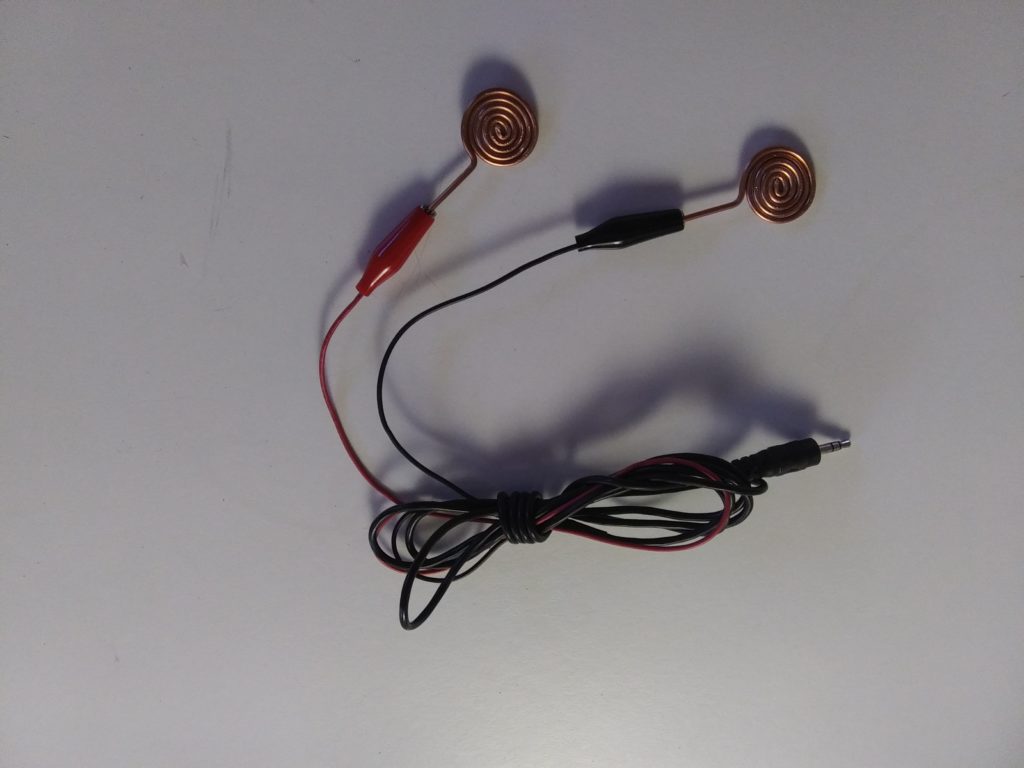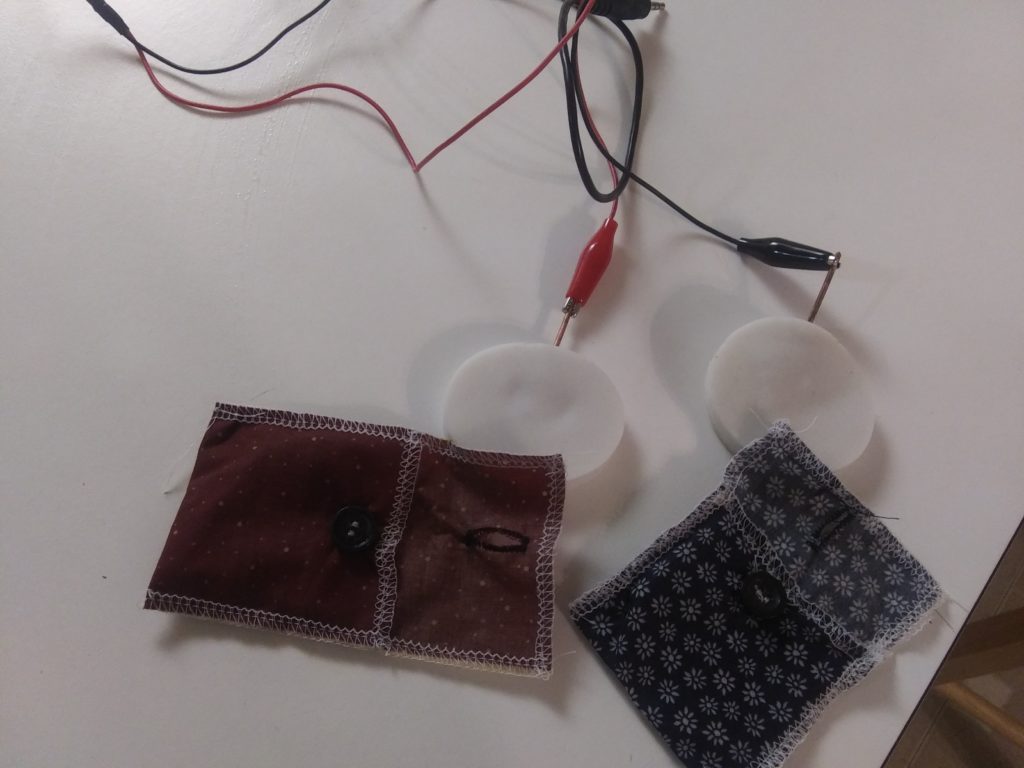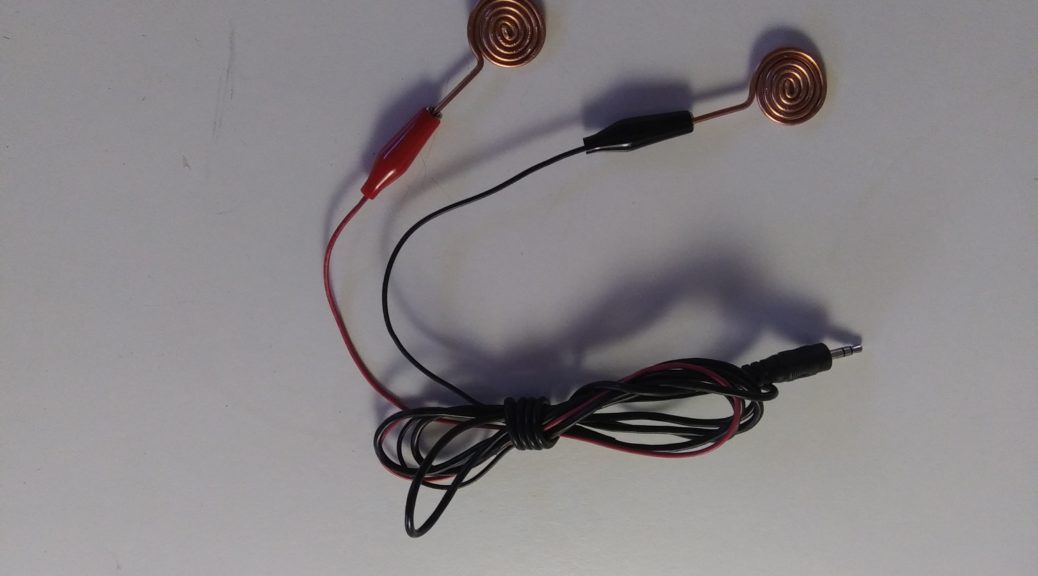I’ve finished the updated design for my TDCS controller, but I’m waiting for a few parts that I didn’t have on-hand and couldn’t strip off of the board that represented my first attempt. Rather than just sit around and wait, I decided to figure out how to make a decent set of electrodes without ordering stuff online.
I used a standard 3.2mm mono-jack to connect the leads, and had intended to build my own cables. However, I don’t have any wire around the house that is suitable for this use. All of it is either way to heavy a gauge, or it’s solid core and stiff. I can either wait for the parts to arrive, or I can improvise. If you know much about me, you know I’m fond of improvising so long as it isn’t unsound. I had a cable from a pair of headphones laying around, and the only difference between a mono jack and stereo headphones is an extra conductor that I can completely ignore.
Headphone wire is well enough for the cable, but breaking out pigtails requires slightly more robust stuff. Again, I didn’t have any wire laying around that was suitable, but I did have an old DC motor I scavenged years ago, and the power leads to it were just right. I clipped those off, soldered and heat-shrinked (is that a word?) them, and soldered on some alligator clips. To make the actual electrodes, I cut two pieces of 14ga solid copper wire (taken from some extra ROMEX wire I had laying around) and coiled it into about a one inch disc.

From what I’ve read, the electrodes can burn you if the current isn’t distributed over a large enough area. Standard practice is to use saline soaked sponges, so I went to the local WalMart to see what was available. All of the sponges I could find in the cleaning isles contained an antimicrobial substance (you can tell because it warns you against use in aquariums). I don’t like the idea of that kind of stuff migrating from the sponge into my head, even though that’s a mostly irrational concern. I kept looking for a sponge that didn’t have that stuff in it. The make-up isle had the answer.
Make-up sponges don’t have antimicrobial stuff on them except for some vitamin E. They are also about the right size. I bought a bag for a dollar and headed home. Using a utility knife, I sliced a pocket inside two of them and inserted the wire coils. After soaking them in salt water, I stacked the two on top of each other and connected them to my first controller design (it generates the right current, it just doesn’t show you it’s working and the safety features won’t work right). The controller reliably produced the correct current through the pads.
To make it easier to distinguish anode from cathode, and to keep the whole thing together, I made small pouches out of red and dark blue material to stick the sponge and electrodes in. While I was rummaging through my wife’s sowing kit, I also grabbed some elastic and velcro to make some bands to hold the pouches in place. Here’s the end result


Now… I just need those parts to arrive and I can test it. If all goes well, the last step will be to design or buy an enclosure. I haven’t decided yet if I’ll have a friend 3-D print one, or just buy one from the electronics hobby type stores.

Wow, you are a first rate writer as well!
Absolutely on the diytdcs site very first time for about 15 minutes. Just love your descriptions and pictures. Lots of stuff to absorb. Thanks for your implicit encouragement. Hope to get more involved and like the idea of current real time monitoring. Father was an old receiving tube TV repairman and I learned to solder before I was 6 y.o. Got lost in a psych PhD. and hope now to make a difference helping people with all this (intersection). Thanks again, I will try to put one together. My website is not ready.
Thanks! I’ve been meaning to finish a redesign with through-hole components (for easier DIY builds) and incorporate the real time current monitor, but life gets in the way. If you are serious about building one, I could probably spend a few hours doing that instead of working on one of my other projects. Let me know your interest and timeline.
I’m packaging the ones I built into project enclosures at the moment, and will probably need to update the board geometry for future builds based on that.